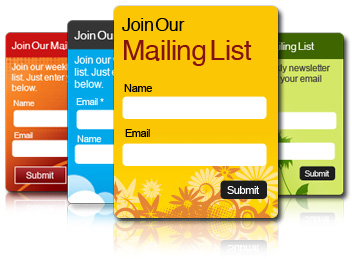Any business can launch an email marketing campaign, but success will be limited to those that master the basics. You cannot avoid these email marketing best practices if you want your campaigns to deliver results.
1. Add Opt-In Forms To Your Website

A database of quality email prospects will not suddenly emerge from thin air. You need to give your business every chance to add new prospects to your database. The most obvious method is to add opt-in forms to every page of your website.
Fixed opt-in forms can be positioned natively in the footer or margin of every page. Another option is to include an opt-in popup when users load your homepage.
Make opt-in forms eye-catching to capture attention. Talk to your web designer or else add your own opt-in forms by downloading WordPress plugins. There are multiple options out there.
2. Segment Your Email Database

A basic act of segmentation is to send introductory content to new users, whereas long-term users would receive more advanced content. All users are not created equal. Segmenting will enable you to communicate with them at their level and increase the click-through rates from your email campaigns.
3. Send Clear, Concise Messages

First of all, think carefully about whether or not you have something valuable to say. Are you emailing to send a special offer or provide free content? Or are you just telling that you have a fantastic business that is great at what it does? Clear messages will let customers see if the email is of interest. Otherwise, it is likely destined for their junk folder.
Additionally, an email is not an opportunity to send hundreds of words to your customers. Include only concise explanations and provide step-by-step instructions if they need to claim offers or download any content.
4. Refrain From Overusing Visual Content
 HubSpot found in its 2014 research that a standard 6% click-through rate for all-text emails dropped to just 3% for image-intense emails. During research, HubSpot determined that the 3% click-through rate was reached once companies added 15 or more images to emails.
HubSpot found in its 2014 research that a standard 6% click-through rate for all-text emails dropped to just 3% for image-intense emails. During research, HubSpot determined that the 3% click-through rate was reached once companies added 15 or more images to emails.
Email marketing software will enable you to test all-text campaigns against ones that include a few images. Continue testing until you find the optimum text-to-image ratio for your email campaigns. Preference will differ from audience to audience.
5. Split Test All Of Your Campaigns
 This is the ultimate recommendation for email marketing best practices. Split testing is what will inform all of your major decisions to increase email conversion rates, in turn growing your revenue.
This is the ultimate recommendation for email marketing best practices. Split testing is what will inform all of your major decisions to increase email conversion rates, in turn growing your revenue.
Split testing entails assigning an A version of your campaign as the control version. The rationale is that you test a more experimental B version of the campaign and then compare the results with A. In the end, you will know which was more effective.
An ideal split test for developing your email marketing skills would be to test all-text emails against those that incorporate visuals. Email marketing software will let you compare results.
6. Support Your Efforts With Social Media
 A one-way system of merely sending emails is not enough. To create genuine connections with your customers, social media is also needed. Customers can use your accounts to talk to you about the latest content you shared. That will encourage dialogue with interested customers who could become advocates for your business.
A one-way system of merely sending emails is not enough. To create genuine connections with your customers, social media is also needed. Customers can use your accounts to talk to you about the latest content you shared. That will encourage dialogue with interested customers who could become advocates for your business.
At this stage, you should not rush off to create accounts with every major social media platform. Spreading your resources thin will only compromise the quality of your social presence.
Only sign up with leading platforms like Facebook, Twitter and Google+, plus a couple of specialized options if needed. For example, a business selling visual products would benefit from creating a Pinterest account to share images. Alternatively, a LinkedIn account would enable a service provider to share valuable blog content with industry professionals.
Contact Us
Ready to discuss how to use email marketing
to boost your cannabis business?





